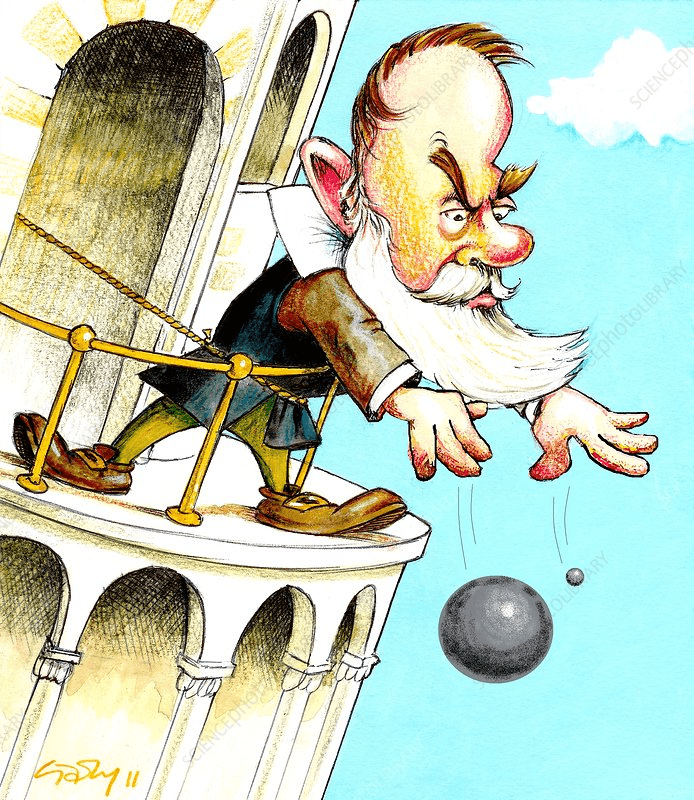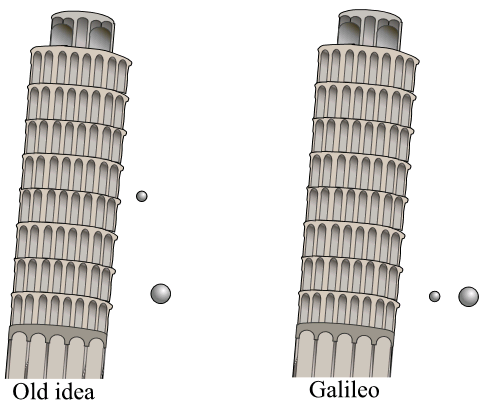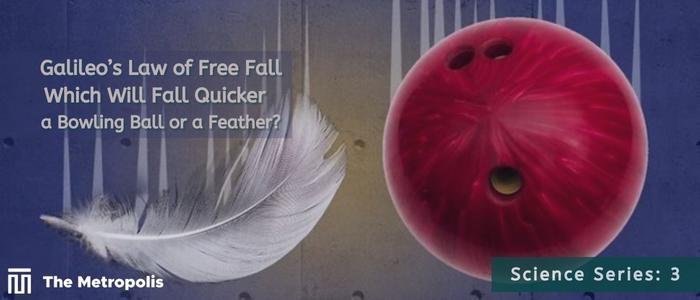Aziz Hawaldar –
Galileo Galilei is considered to be one of the greatest scientists in history. He was a pioneer in the field of physics, mathematics, astronomy, and engineering. Galileo’s contribution to science, particularly his work on falling bodies and the laws of motion, was a breakthrough that revolutionized the scientific world.
Galileo experimented by dropping two spheres of various masses from the summit of the Leaning Tower of Pisa in 1589. The two spheres collided with the earth simultaneously, much to everyone’s amazement. Every time Galileo repeated the experiment, the two spheres fell to the ground simultaneously. The Aristotelian theory, according to which heavier objects fall more quickly than lighter ones, was completely at odds with this.
Galileo’s research on the acceleration of falling bodies was revolutionary because it went against the grain of the accepted wisdom of the day and established the theoretical basis for the study of dynamics, the area of physics that studies the motion of objects and the forces that propel that motion.

Galileo concluded that the acceleration of a falling body is constant — that is, that the rate of fall of an item increases at a constant rate with respect to time — based on his tests. Thus, if an object is dropped from a resting position, its velocity will increase by a constant amount for each unit of time it falls. The acceleration caused by gravity, which is roughly 9.81 meters per second squared (m/s²) on the surface of the Earth, is now known as this constant acceleration.
Consider a falling object that is initially at rest to better grasp the idea of uniform acceleration. The rate at which the object increases in velocity as it falls is constant, which means that for each unit of time the object descends, its velocity increases by the same amount. This can be expressed mathematically using the following equation:
v = at
where v is the final velocity of the falling object, a is the acceleration due to gravity, and t is the time it takes for the object to fall.
To illustrate this concept, consider a ball that is dropped from a height of 50 meters. Using the equation above, we can calculate the velocity of the ball after it has been falling for a certain amount of time. For example, if the ball has been falling for 2 seconds, we can plug in the values for a and t to get:
v = 9.81 m/s² x 2 s
v = 19.62 m/s
This means that after 2 seconds of falling, the ball has a velocity of 19.62 meters per second. If we were to plot the velocity of the ball against the time it has been falling, we would get a straight line with a positive slope of 9.81 m/s², which represents the acceleration due to gravity.

It is important to keep in mind that while the acceleration caused by gravity is constant close to the surface of the Earth, it can change at other places or when other celestial bodies are present. For instance, due to Jupiter’s bigger mass, the acceleration caused by gravity is much greater than it is on the moon, which has somewhat less acceleration than the Earth.
Galileo’s theory on falling bodies was innovative and difficult, and the scientific community of the time did not immediately accept it. This was primarily due to his experimental strategy’s limitations. Galileo was constrained to conducting his tests by dropping objects from the Leaning Tower of Pisa, which was only 54 meters tall.
The tower’s height was not enough to determine the uniform acceleration of falling bodies. This is because at higher velocities, air resistance — which opposes the motion of the object — becomes important. As a result, the falling object finally reaches its top speed, or terminal velocity, at which point the acceleration is zero.
In addition, the objects that Galileo dropped were not entirely spherical, which would have affected their air resistance and thus their acceleration. He also lacked the equipment needed to gauge how long it took the things to descend, so he had to rely on his observations and judgment. As a result, his measurements were less precise, and his perceptions and prejudices may have affected the outcomes.
Despite these limitations, Galileo was able to demonstrate that the Aristotelian view was flawed. He demonstrated that the rate of fall was independent of the object’s mass and that the length of time it took an object to fall was related to the height it was dropped from. This was a huge advancement in our comprehension of the laws of motion and helped Sir Issac Newton on his path to creating calculus.
It took many years after Galileo’s death for his theory regarding the uniform acceleration of falling bodies to become widely recognized. The Aristotelian school, which predominated in the scientific society, was partially to blame for this opposition. It was also because it was impossible to definitively demonstrate his idea due to the limits of his experimental methodology.

However, the validity of Galileo’s theory was eventually established through the work of other scientists who were able to conduct experiments under more controlled conditions. For instance, Flemish-Dutch mathematician, and scientist Simon Stevin utilized an inclined plane to demonstrate that the rate of fall was independent of the object’s mass in the late 16th century. Galileo’s law of acceleration was validated in the 17th century by Italian physiologist, physicist, and mathematician Giovanni Borelli, who measured the time it took for things to fall using a pendulum.
Galileo’s research on falling objects had a big impact on science. His research and findings upended conventional notions of motion and helped establish the contemporary scientific method. It was a breakthrough in the field of physics, and it led to the development of new theories and laws of motion.
Galileo had a tremendous social impact. His research on falling bodies and the laws of motion served as the basis for the creation of new engineering and technology. The design of bridges, buildings, and other structures still makes use of Galileo’s equations of motion.
The advancement of transportation was significantly influenced by Galileo’s work. The design of modern cars and airplanes relies on the principles of uniform acceleration to achieve optimal performance. As a car accelerates from a standstill, for instance, it does so steadily to prevent engine damage and overtaxing the vehicle. Similarly, the safe takeoff and ascent to the altitude of an airplane depend on consistent acceleration.
Galileo’s concept of uniform acceleration is also essential in space exploration. Rockets are used to send spacecraft and satellites into orbit, and the uniform acceleration principle is employed to make sure they land in the intended orbit. An array of engines in the rockets that launch spacecraft into orbit produce a steady thrust and uniform acceleration. By doing so, the spacecraft can escape Earth’s gravity and go to its final location in space.
The design of sporting equipment also makes use of the idea of uniform acceleration. For instance, the idea is applied in bicycle design to create vehicles that can reach high speeds with little effort. Bicycles are built with an emphasis on continual acceleration, which enables riders to sustain their speed over extended distances.
It also plays a role in the design of roller coasters which rely on the principles of uniform acceleration to create thrilling, high-speed rides. By carefully controlling the rate at which the coaster accelerates and decelerates, designers can create a variety of different sensations, from the stomach-dropping sensation of a steep drop to the weightless feeling of zero gravity.
In addition to the applications mentioned above, this law is also utilized as the foundation for the ballistics concepts that are employed in the design of weaponry.
Galileo’s work has gained so much popularity that it is now frequently used as a metaphor for a level playing field or equal opportunity. In sports, for example, commentators might say that a team has a chance to “level the playing field” by scoring a goal or touchdown. Politicians frequently bring up the idea of a level playing field when talking about social justice or economic inequality.
Galileo’s work on the acceleration of falling bodies was groundbreaking for its time. Before his research, it was widely accepted that an object’s weight directly correlated with how quickly it fell to the ground. Galileo refuted this notion by demonstrating that all objects fall uniformly, regardless of their weight. The legacy of Galileo’s work lives on today and will continue to do so in the future.



